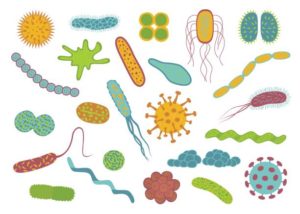Original article by Joel Zivot, MD for MEDPAGE
There are more bacterial cells than human cells in our bodies. It is time to acknowledge that the human might, after all, be the roommate that leaves dishes in the sink and the bathroom dirty. Bacteria tolerated us for 100,000 years but lately, we roommates increasingly find ourselves at odds. I changed my view about bacteria after teaching Tibetan Buddhist monks biology. In the Buddhist tradition, even very simple life like bacteria is considered sentient. Sentient beings are not to be killed and this simple claim presented a problem. I found myself in South India at the Drepung Monastery instructing 120 monks, through a translator. The Dalai Lama, a known lover of science, decided to update the curriculum for monastic education for the first time in 700 years. As a result, I came to teach biology to monks, without a common language and for them without a background in science.

Science considers a cell to be the smallest unit of life. The term “cell” was actually coined by Robert Hooke as he observed the tiny boxes of a cut piece of cork through a simple microscope that reminded him of the so-named rooms occupied by monks. It was fitting that modern monks should come to know bacteria now. Locating bacteria was not difficult in the remote Indian countryside teaming with organic material. I placed a drop of pond water on the slide and applied the delicate coverslip. At once, we saw the agitated cellular life scurrying about with a plan and purpose only known to them. As this observed life was sentient according to my monk hosts, the problem arose as to how to dispose of the droplet in a life-preserving fashion. I chose the sink drain and reassured my monks that the bacteria would manage what I imagined was fairly basic plumbing.
As a physician in intensive care, I find myself quarreling with bacteria on a regular basis. I methodically search for the slightest evidence of bacterial invasion and on suspicion alone, I seek bacterial obliteration with an appropriately named antibiotic. That has been our way since the notion of human infection caused by bacteria was first described. When bacteria are on us or in us, we describe this generally as an infection. The medical specialty known as infectious diseases aptly describes the configuration. Medical reasoning starts with a model and the bacteria-infection model has been reasonably successful. Bacteria, as it turns out, have a different view. When bacteria are exposed to antibiotics, a rather rapid genetic survival of the fittest ensues. Antibiotics quickly become ineffective and the balance of power shifts away from the human and towards the bacteria.
In no way am I advocating the suspension of antibiotics. Some bacteria, like the bad roommate, must be dispatched. Most dramatically, as it turns out, we have had all along a spectacular bacterial roommate residing quite happily in our poop. Recently, the power of human poop, as a consequence of beneficial bacteria has increasingly become evident. The FDA and private venture capital are in a pitched battle for control of our feces. Human poop might be a pharmacologic and monetary bonanza.
Tibetan monks use a stylized form of debate as a tool of learning. It’s astounding to watch the normally peaceful monks engage in shockingly furious debate, including name calling and smack talk that would impress boxers squaring off for a prize fight. As an exercise, I directed my monks to debate if it would be acceptable to kill a single bad bacterium to save a good man. As it turned out, the monks flipped the question and instead debated if it would be acceptable to kill a bad man to save a good bacterium. What secrets about health and human disease are lurking in our poop? Will we learn the lesson in time?
Joel Zivot, MD, is fellowship director in critical care medicine at Emory University School of Medicine in Atlanta. His clinical expertise and research interest include care of critically ill patients in the OR and ICU, education and scholarly work in bioethics, the anthropology of conflict resolution, pharmaco-economics, and a variety of topics related to anesthesiology/critical care monitoring and practice.



